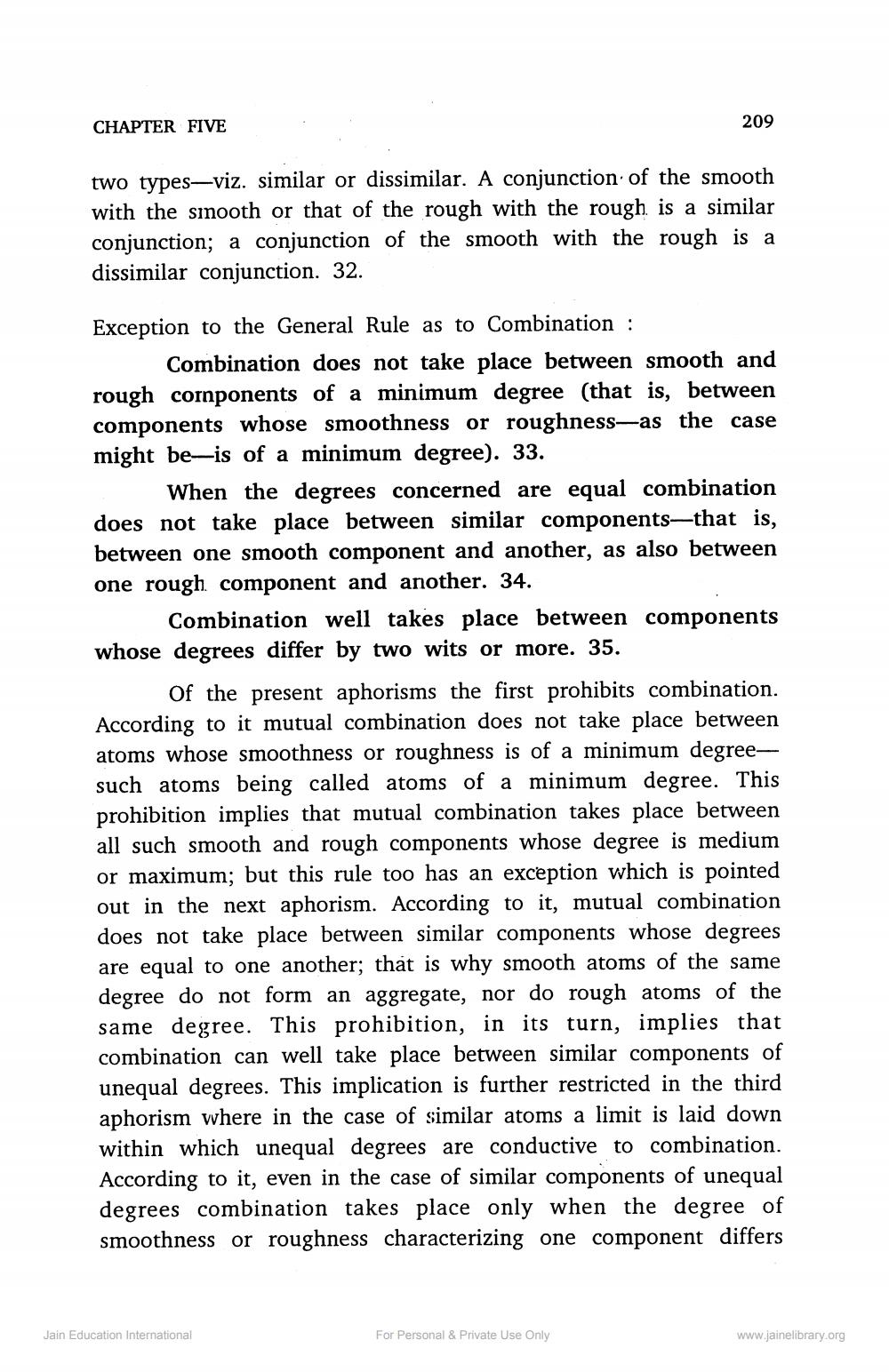________________
CHAPTER FIVE
209
two types—viz. similar or dissimilar. A conjunction of the smooth with the sinooth or that of the rough with the rough, is a similar conjunction; a conjunction of the smooth with the rough is a dissimilar conjunction. 32.
Exception to the General Rule as to Combination :
Combination does not take place between smooth and rough cornponents of a minimum degree (that is, between components whose smoothness or roughness—as the case might be—is of a minimum degree). 33.
When the degrees concerned are equal combination does not take place between similar components—that is, between one smooth component and another, as also between one rough component and another. 34.
Combination well takes place between components whose degrees differ by two wits or more. 35.
Of the present aphorisms the first prohibits combination. According to it mutual combination does not take place between atoms whose smoothness or roughness is of a minimum degreesuch atoms being called atoms of a minimum degree. This prohibition implies that mutual combination takes place between all such smooth and rough components whose degree is medium or maximum; but this rule too has an exception which is pointed out in the next aphorism. According to it, mutual combination does not take place between similar components whose degrees are equal to one another; that is why smooth atoms of the same degree do not form an aggregate, nor do rough atoms of the same degree. This prohibition, in its turn, implies that combination can well take place between similar components of unequal degrees. This implication is further restricted in the third aphorism where in the case of similar atoms a limit is laid down within which unequal degrees are conductive to combination. According to it, even in the case of similar components of unequal degrees combination takes place only when the degree of smoothness or roughness characterizing one component differs
Jain Education International
For Personal & Private Use Only
www.jainelibrary.org




